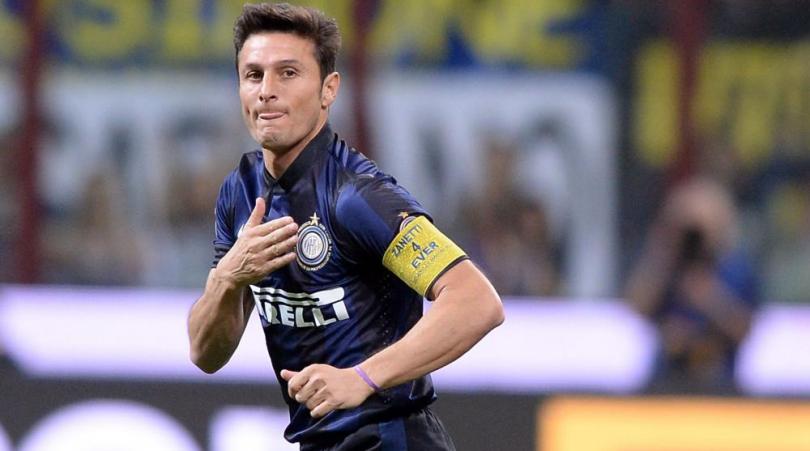Morals, murals and motives: Cliftonville v Celtic
Cliftonville prepare to host Celtic in their biggest ever match
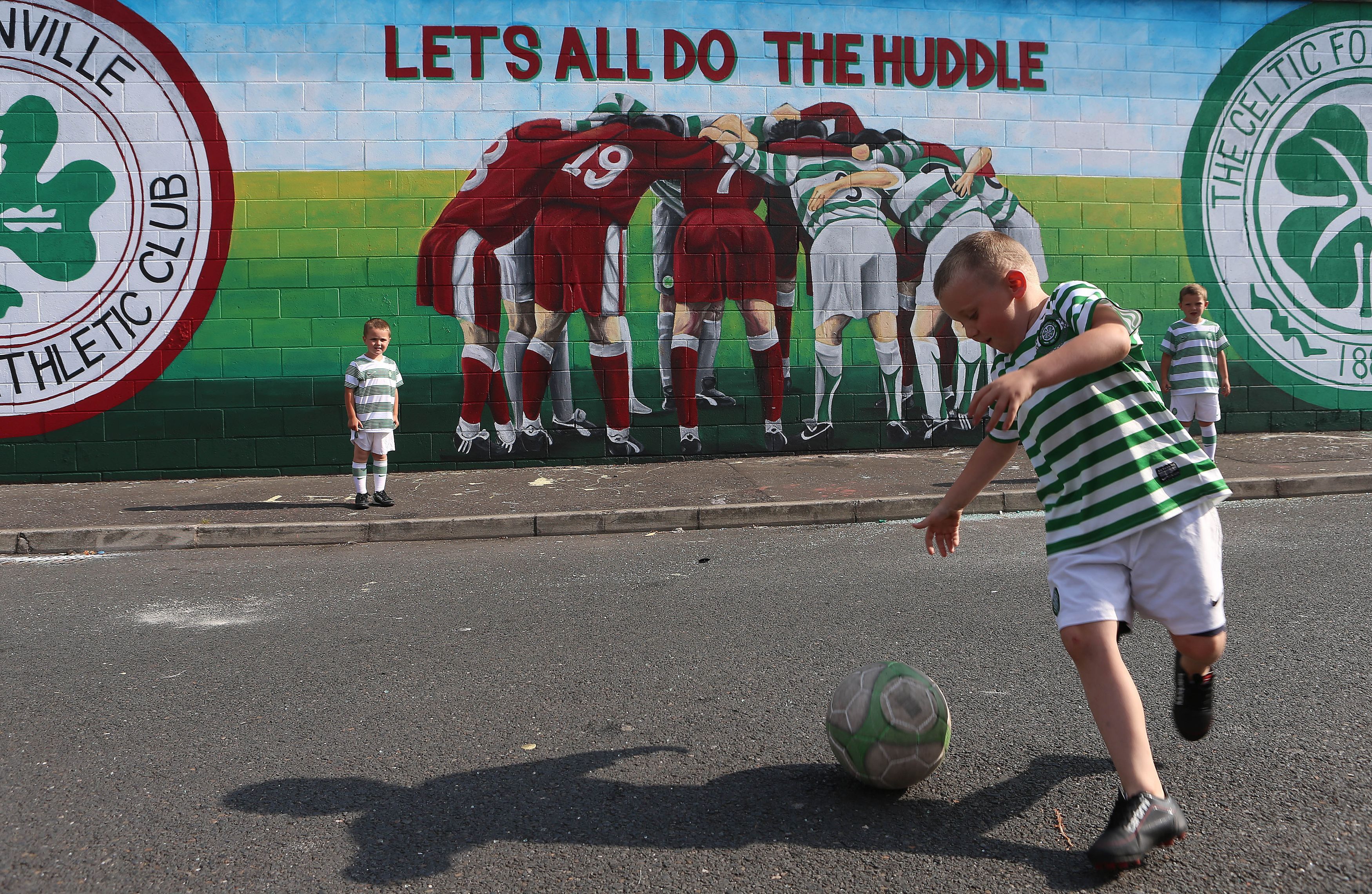
Nothing depicts the city of Belfast quite like a mural. Although traditionally reserved for expressing political beliefs or commemorating key events in Northern Ireland's troubled past, the relatively stable state of the peace process in the country has not deterred the flow of such giant works of art.
Indeed, some modern murals promote the long-term notion of Catholics and Protestants living side by side in tranquilly, while others use the power of the paintings to highlight social issues from domestic abuse to littering.
Whatever their religion, the people of Belfast and Northern Ireland have always been immensely proud of local sporting heroes who have gone on to gain global recognition. George Best immortalised in several murals on both sides of the capital's divide, while former world number one golfer Rory McIlroy has one dedicated solely to him at the bottom of Damascus Street.
Last week, the paint was drying on a fresh mural in the Lower Ormeau Road area in the south of the city. Very much a Catholic, predominantly nationalist territory of Belfast, the painting incorporates the crests and players of both Cliftonville FC and Celtic FC, who will meet in a competitive fixture for the first time in the Champions League second qualifying round on Wednesday.
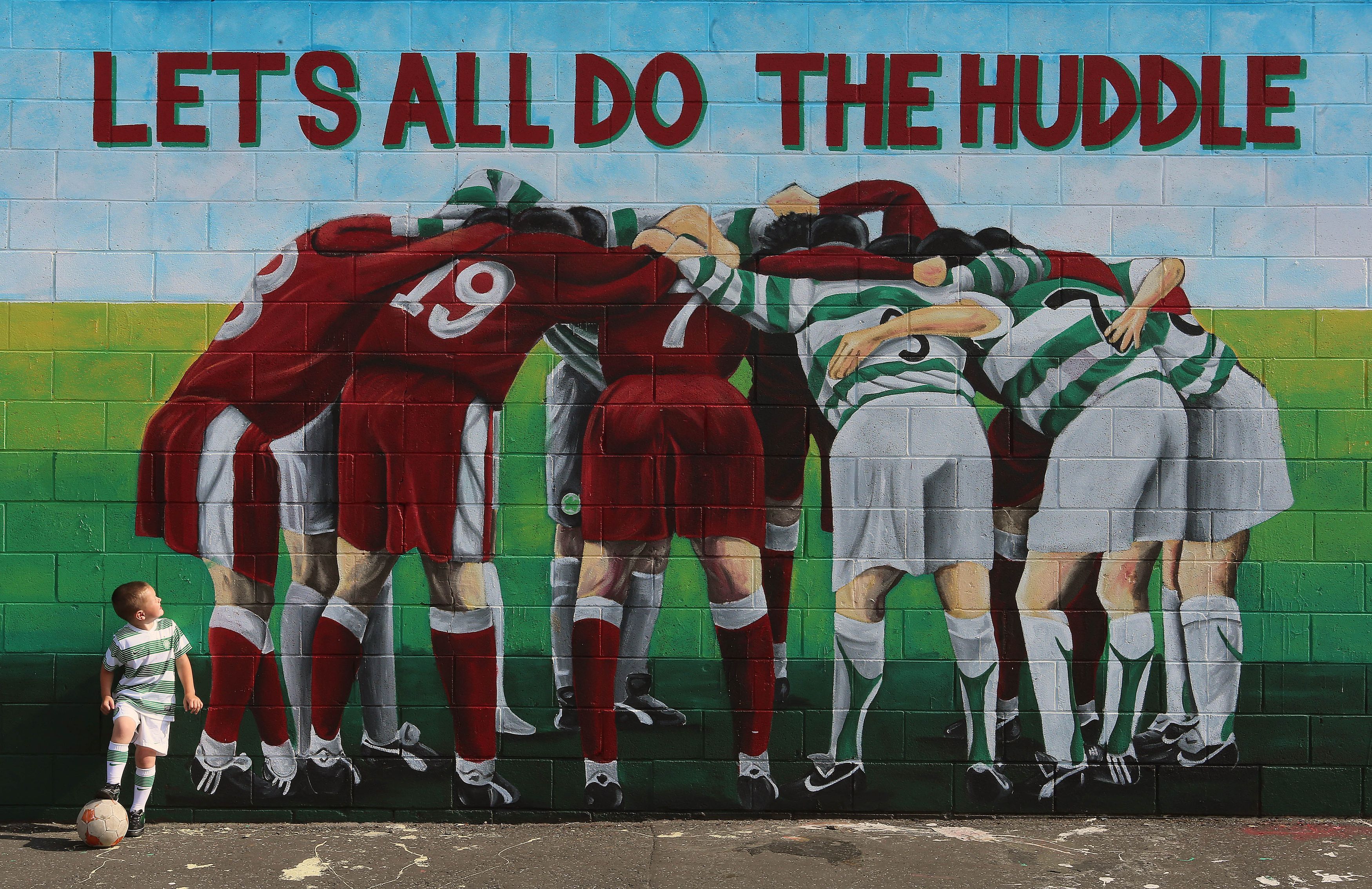
Two clubs, one culture - the shared political vision of Cliftonville and Celtic fans will this week be celebrated in unique style at Solitude, home of the former, as supporters of both teams will mix side-by-side in the 123-year-old stadium amid an inevitable sea of red, white and green.
While Celtic's fanbase is largely made up of Irish and Scottish nationalists, a proportion of which hold Republican beliefs, it is worth noting that the club welcome supporters of all ethnic and religious backgrounds, so long as they maintain a left-wing stance.
As for Cliftonville, Ireland's oldest club originated through the support of local Protestants in North Belfast back in 1879 and today's fan base might have remained as such had an influx of Catholics not taken up residency on the Antrim Road before adopting the Reds as their local team.
Get FourFourTwo Newsletter
The best features, fun and footballing quizzes, straight to your inbox every week.
Although now fundamentally followed by Catholics, Cliftonville has not completely severed its roots, with much of the club's board belonging to the Protestant community, while a minority of the same background refuse to boycott family traditions passed on through multiple generations.
Although they just missed out on a domestic treble, 2013 was already a landmark year in Cliftonville's 143-year history ' the tie with the Bhoys was merely a thick layer of icing on an already substantial cake, with Reds chairman Gerard Lawlor describing the pairing as 'a moment of football history.'
In April, the Reds sealed their first league title in 15 years by snatching a 3-2 win against fierce rivals Linfield, the most successful team in the history of Northern Irish football. This came courtesy of a dramatic late penalty from George McMullan, and saw Cliftonville become the only team other than Belfast's 'big two' (Linfield and Glentoran) to win the top tier in over a decade.
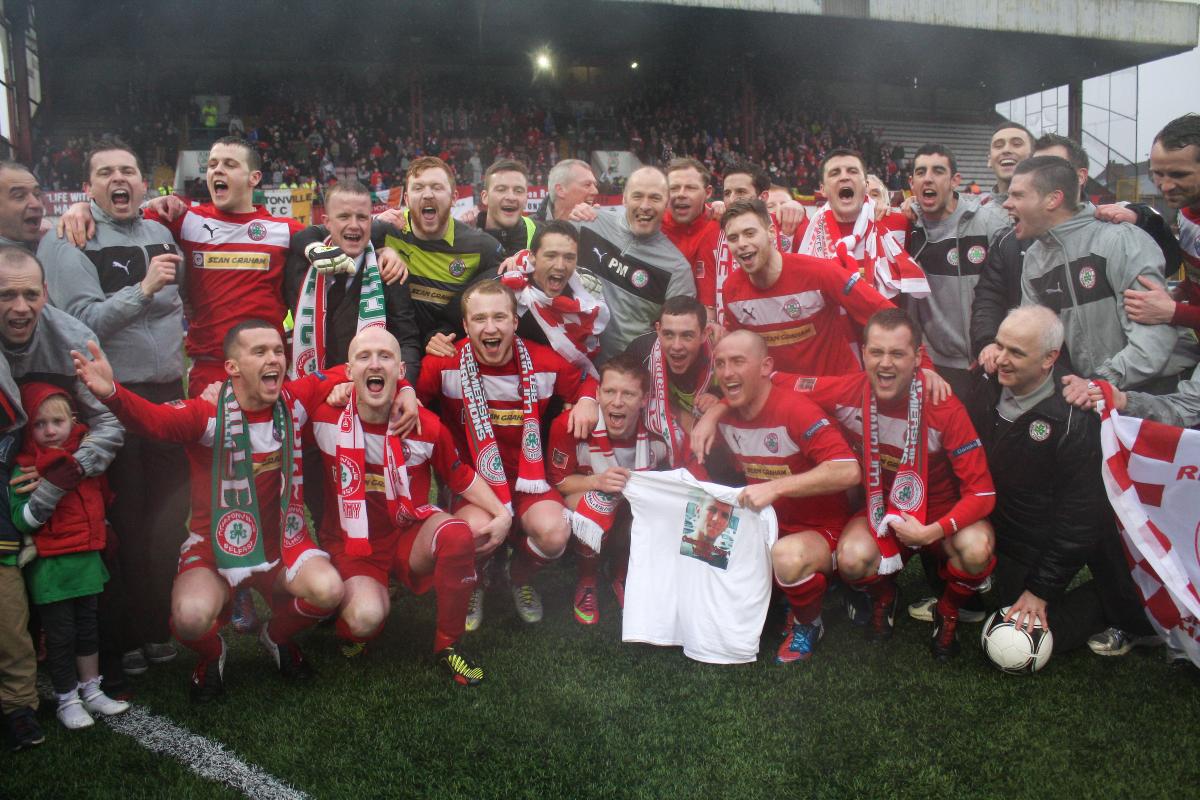
So big was the moment that was about to unfold, referee David Malcolm permitted a delay in the taking of the spot-kick to allow the local media a chance to pick up the best positions from which to shoot the scene. McMullan, a lifelong fan of the club and one of their many Belfast-born players, duly delivered and it remains a wonder how the dilapidated Solitude stands withstood the ensuing euphoria.
With Belfast being home to more Celtic fans than Cliftonville fans, Lawlor was immediately put under pressure to stage their home leg in a ground of greater capacity than Solitude's approximate 2,500.
The pressure, though, came chiefly from the press, who conjured up stories of the opening leg potentially being held in Windsor Park or even Casement Park, latter more accustomed to Gaelic games, while even Dublin's Aviva Stadium was mooted as a candidate.
In truth, the prospect of staging arguably the biggest game in the club's history away from Solitude never crossed the board's mind, with Lawlor ordering a paint job on the outside of the stadium a day after the draw in anticipation of the Scottish champions coming to visit. In an era so awash with commercialism and capitalism, how invigorating to see a football club reject the opportunity to milk an event for all it's worth, in favour of siding with their community's vote.
Devising a ticket scheme that puts Bournemouth's pricing for a pre-season friendly with Real Madrid to shame, season-ticket holders and members were given first refusal on a maximum of two per head, ranging from £15 to ã30. The rest went on general sale at the same price two days later to anyone with proof of their £5 admission to Cliftonvilled's friendly with The New Saints that same afternoon, taking just 35 minutes to sell out.
And, thanks to a successful application to UEFA for permission to arrange additional seating specifically for their home leg, around 1300 extra spectators will be crammed in come Wednesday, most of which are expected to be Belfast-based Celtic fans, with Cliftonville having already taken paramount consideration in seeing to their own Red Army.
As if the board hadn't nailed their ethics already, anyone unfortunate enough to have originally missed out in that lengthy queue towards the box office was provided with a 'priority token' with which to obtain one of the extra seats that have since been confirmed.
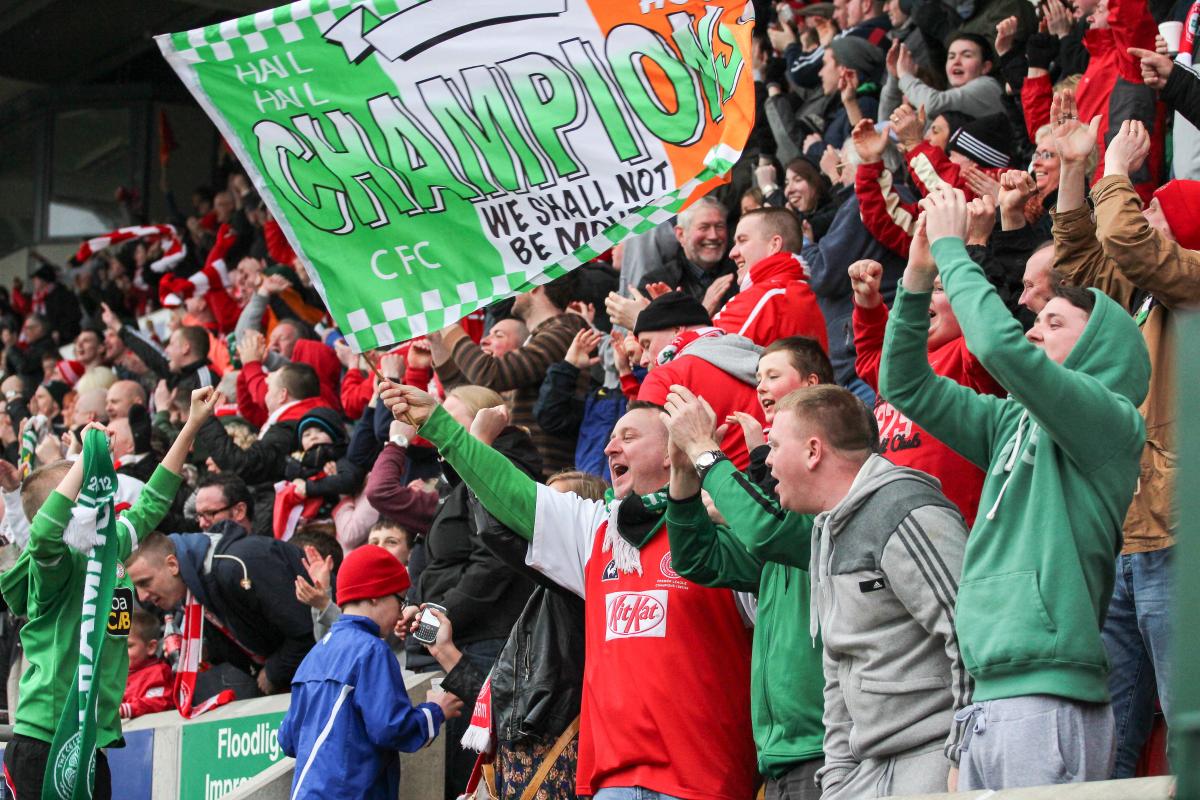
The hosts, a relatively short team who like to play a slick passing game across the deck, will look to their working-class ethos of hard graft and teamwork over natural ability when they come up against their full professional counterparts. Yet the bookmakers will expect Celtic's fitness to prove the difference on the opening night of the tie.
Though the Reds can scarcely expect to progress after two legs and may not reap the full financial benefits it perhaps could have provided, the long-term affect it can have on their domestic success may prove priceless.
Some local Celtic fans, driven by fear of missing out on the big occasion, bought up 2013-14 Cliftonville season-tickets purely for the advanced access to the Champions League tie, so the board can expect some new faces on the terraces when normal service resumes in August.
Furthermore, key players such as prolific strike partners Joe Gormley and former Werder Bremen man Liam Boyce, plus goalkeeper Conor Devlin, needed little encouragement to stay with the club upon the promise of a dream tie with the 1967 European Cup winners, followed by a title defence.
Throw in the reported five-figure sum the BBC have agreed for the right to show the first leg on terrestrial television in Northern Ireland and Scotland, and the club can walk away from the whole affair with their spirits high and morals in place, whatever the result.
Although it's unlikely to make the route of any open-top bus tours of the city any time soon, for any fans of the beautiful game intent on visiting the city of Belfast, there's a mural on Essex Street, Lower Ormeau Road, that promises to stand the test of time.
Jamie Casey is a sports writer for a range of publications. He is intrigued by ancient stadiums, sport's role in society and cites boxing and formula one amongst his preferred pursuits, but his real passion is the most beautiful of games that is football. You can follow him on Twitterhere.
